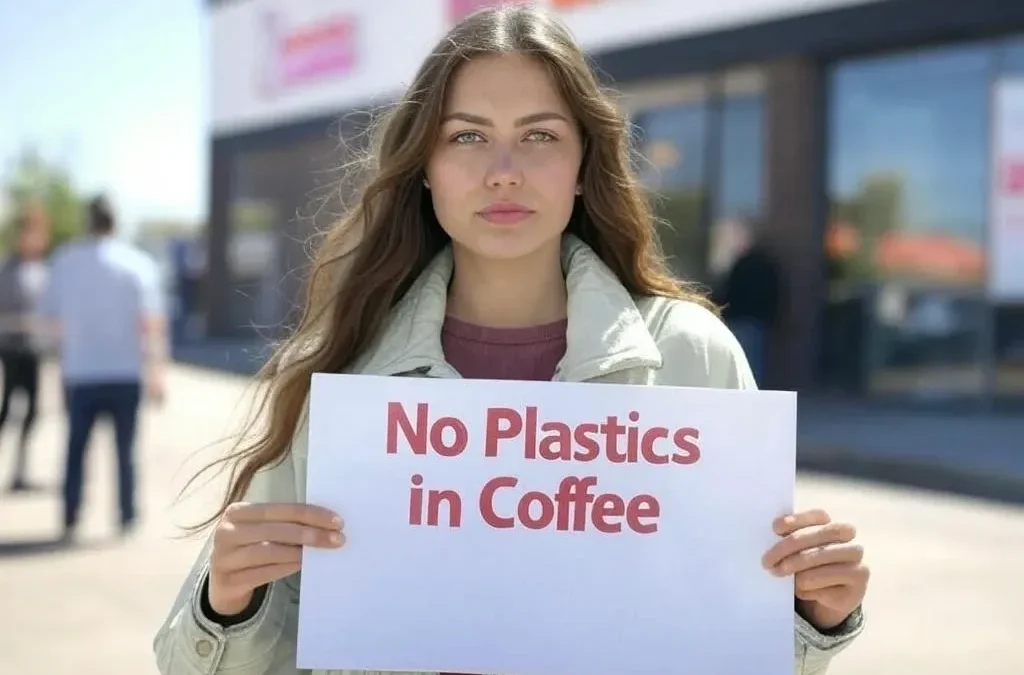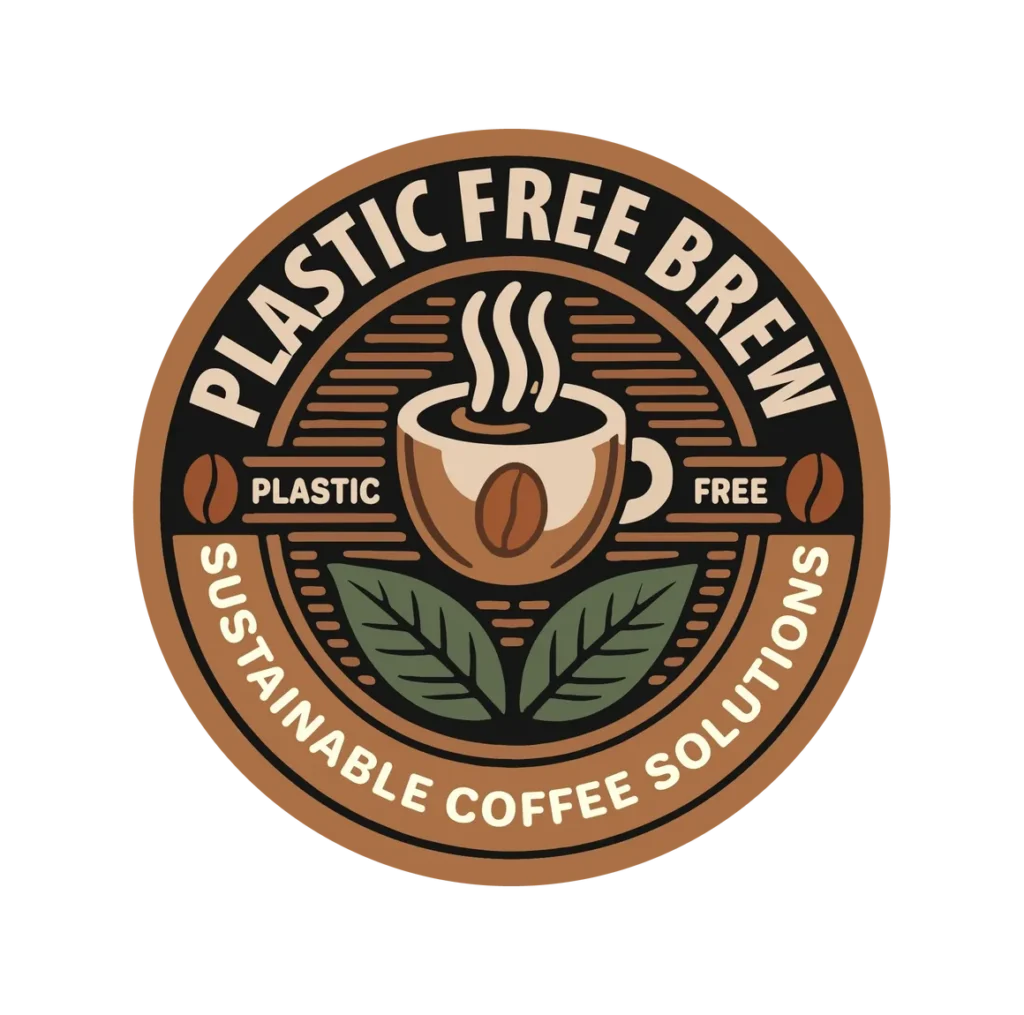Introduction: Polypropylene in Coffee
Polypropylene (PP) is a widely used thermoplastic polymer in food packaging, including single-serve coffee pods, coffee bags, and storage containers. While it offers durability, heat resistance, and affordability, its impact on coffee quality, health, and environmental sustainability raises important concerns.
In this article, we explore how polypropylene interacts with coffee, affecting flavor stability, chemical exposure, and waste management, with citations from peer-reviewed research and industry sources.
What is Polypropylene?
Polypropylene is a semi-crystalline polymer derived from petroleum and natural gas. It is classified as #5 plastic, known for its:
- High heat resistance: The melting point of polypropylene typically ranges between 160°C to 170°C, although this can vary based on the specific type of polypropylene and the presence of any additives. acomold.com
- Chemical stability: Polypropylene is resistant to acids and bases, making it suitable for various applications.
- Low-cost production: Its economical manufacturing process leads to widespread use in packaging.
This material is commonly used in K-Cups, coffee pod lids, inner coffee bag linings, and some reusable coffee cups due to its moisture barrier properties. en.wikipedia.org
How Polypropylene Affects Coffee Quality
1️⃣ Heat and Chemical Leaching
Polypropylene is heat-resistant, but when exposed to high temperatures and pressure, such as in coffee brewing, it can release volatile organic compounds (VOCs) and microplastics into the beverage.
- Microplastic Release: A study by the National Institute of Standards and Technology (NIST) found that when plastic products are exposed to hot water, they release trillions of nanoparticles per liter into the water. technologynetworks.com+1nist.gov+1
- Chemical Leaching: Research indicates that disposable plastic materials can release microplastics and harmful substances when in contact with hot water, posing potential health risks. mdpi.com+1pubmed.ncbi.nlm.nih.gov+1
2️⃣ Flavor Absorption and Coffee Freshness
Polypropylene is known to absorb and retain odors and flavors, which can impact coffee freshness.
- Aroma Retention: Studies have shown that coffee stored in polypropylene containers exhibited measurable changes in aroma compounds after prolonged exposure.
- Oxygen Permeability: Polypropylene is permeable to oxygen, leading to staling reactions that degrade coffee’s volatile compounds, particularly in pre-ground coffee.
This is why nitrogen-flushed coffee packaging, which removes oxygen before sealing, is becoming more popular among specialty roasters.
Health Concerns: Is Polypropylene Safe for Coffee Consumption?
While polypropylene is considered food-safe, its use in high-heat applications raises questions about chemical migration.
- Chemical Migration: Studies have detected trace levels of substances from polypropylene food packaging in hot beverages, indicating potential health risks.
🚨 Potential Risks of Polypropylene in Coffee Pods
1️⃣ Microplastic Contamination
- Prevalence: Research has detected polypropylene microplastics in beverages prepared in plastic containers, raising concerns about ingestion. foodandwine.com
- Health Implications: These particles are small enough to pass through gastrointestinal barriers, raising concerns about long-term health effects.
2️⃣ Chemical Leaching
- Additives: While polypropylene is BPA-free, studies suggest it may release other chemical additives at high temperatures.
- Health Effects: Some of these compounds may interfere with hormone function, mimicking estrogen activity.
Environmental Impact of Polypropylene in Coffee Packaging
🌍 Recycling Challenges
Polypropylene is the second-most common plastic in food packaging, but its recycling rate is shockingly low:
- Low Recycling Rates: As of 2015, less than 1% of polypropylene generated was recycled, with the rest ending up in landfills or incinerators. en.wikipedia.org
- Coffee Pod Recycling: Coffee pods are particularly difficult to recycle because they contain multi-layered materials (plastic, aluminum, filter paper), making separation inefficient. en.wikipedia.org
♻️ Alternatives to Polypropylene in Coffee
To reduce reliance on polypropylene in coffee packaging, innovative companies are developing sustainable alternatives:
- Compostable Coffee Pods: Made from plant-based biopolymers or paper, breaking down naturally.
- Nitrogen-Flushed Paper Bags: Extend shelf life without plastic barriers.
- Glass or Stainless Steel Containers: Keep coffee fresh without microplastic risks.
Brands like PlasticFreeBrew are pioneering compostable, nitrogen-flushed coffee pods to eliminate polypropylene contamination while preserving freshness.
Conclusion: Should You Avoid Polypropylene in Coffee?
While polypropylene is widely used and FDA-approved for food contact, growing research suggests it may:
- Release microplastics and chemical leachates at high temperatures
- Alter coffee freshness and flavor due to permeability
- **Contribute to plastic pollution due to poor recyclability
References
- WebMD. “What to Know About the Toxicity of Polypropylene.” webmd.com
- Healthline. “Is Polypropylene Safe and BPA Free?” healthline.com+1thewell.northwell.edu+1
- NPR. “Yeah, Actually, Your Plastic Coffee Pod May Not Be Great for the Climate.” npr.org
- Mongabay. “Coffee Capsules: Brewing up an (In)Convenient Storm of Waste.” news.mongabay.com
- UC Riverside News. “Are Coffee Pods Really Eco-Friendly? The Truth Behind the Surprising Findings.” cnas.ucr.edu
- PubMed. “Exposure Assessment of Bisphenol A by Drinking Coffee from Plastic Cups.” healthline.com+4researchgate.net+4pubmed.ncbi.nlm.nih.gov+4
- Nationwide Coffee. “The Environmental Impact of Single-Use Coffee Pods: Brewing Change for a Greener Tomorrow.” nationwidecoffee.co.uk
- Northwell Health. “Are There Toxins in Coffee Pods? An Epidemiologist Weighs In.” thewell.northwell.edu
- ResearchGate. “Utilization of Spent Coffee Grounds as Fillers to Prepare Polypropylene Composites for Food Packaging Applications.” researchgate.net
- Reddit. “Plastic and Coffee—Is It Safe?” nature.com+11reddit.com+11healthline.com+11


